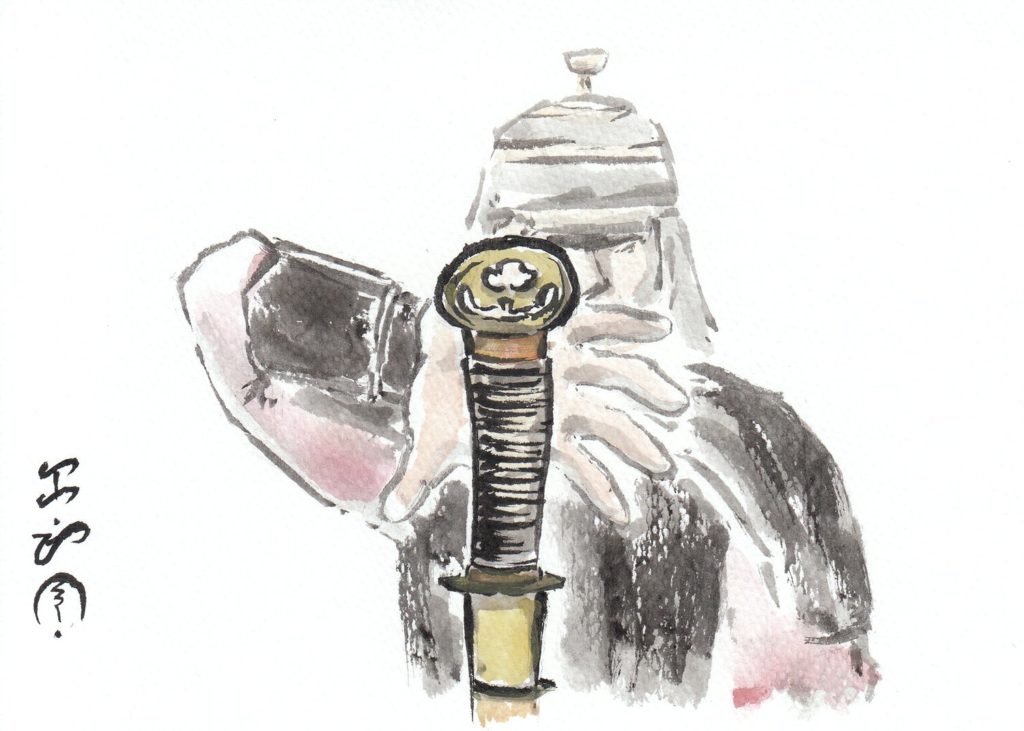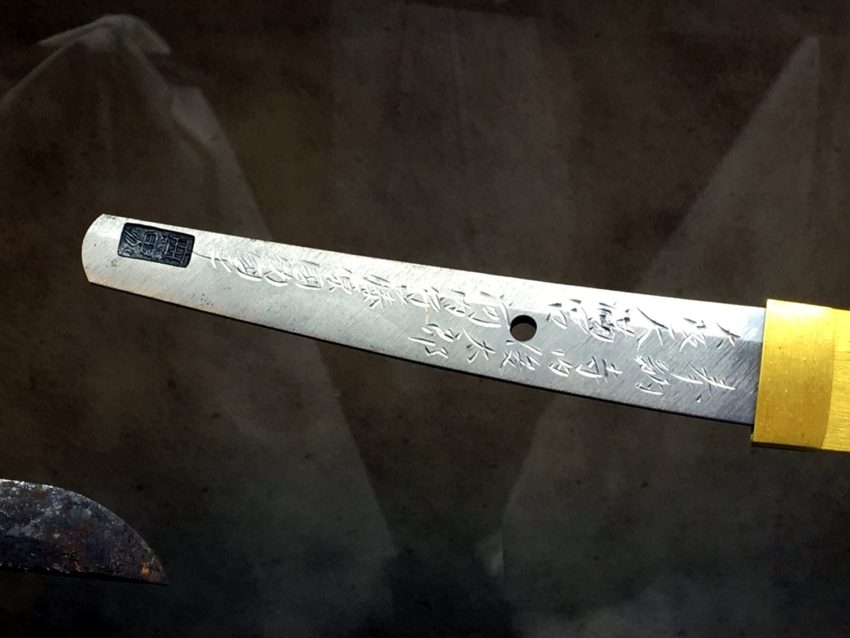When most of us think about the Japanese sword, we think of the graceful and familiar curves of the katana. However, the katana was the product of many centuries of progressive engineering. When we search for the oldest Japanese sword ever found, we find a world of unique and interesting weaponry that is quite different from the weapons of the medieval Samurai warrior.
Are These Swords Actually Japanese?
Before we attempt to find the oldest Japanese sword, we should mention that the oldest Japanese swords date from the early periods of Japanese history, known as the Jomon, Yayoi, and Kofun periods (basically everything before 538 AD). At this time, the culture of Japan was mainly defined by the tribal peoples known as the Ainu. The culture that we would recognize as “Japanese” did not exist at this time. Also remember that early Japanese culture was heavily influenced by China. However, these swords are definitely an important part of Japan’s history.
What Is The Oldest Japanese Sword Ever Found?
No swords from the Jomon period have ever been found. It is generally recognized that metallurgy was not developed in Japan until the late Jomon. A Jomon sword would be the oldest Japanese sword if it existed, but it probably never did. Therefore, we must begin by discussing the swords of the Yayoi period.
Yayoi Swords
Yayoi swords were made of bronze, and appear to have been used entirely for ceremonial purposes. There is corroboration for this fact in an account written by Chinese travelers, who referred to Yayoi Japan as “The Land of Wa.” The Chinese account says that the people of Wa used spears, shields, and bows as their main weapons. There is no mention of swords, bronze or otherwise. Therefore, these swords are of little interest to us.
Kofun Swords
During the Kofun period, we begin to see the first functional swords. It is safe to say that the very oldest Japanese swords date from this period. Because it is difficult to date an item as old as this, Kofun swords cannot be given an exact age. However, the oldest japanese sword is probably the Todaijiyama sword. It is recognized as the oldest inscribed sword in Japan, and we have not been able to find a record of any older swords.
However, we have a problem here: This sword probably wasn’t made in Japan. When translated, the inscription tells us that this is a Chinese sword from the time of the Han dynasty. It was apparently made in China around 185 AD, though it was later found in Japan.
The hunt continues.
The Inariyama Sword
We have to disqualify the Todaijiyama sword because it was made outside of Japan. When we look for the next contender, we see the famous Inariyama sword. This is an ancient iron sword excavated from a burial mound. In this mound, the sword was found inside the tomb of a warrior known only as Wowake.
This is a straight-bladed sword, but we cannot verify the sword type because the tip is missing. All the rusting doesn’t help either. Based on what we can see, it is either a Chokuto or a Chinese-style broadsword like the Goujian sword.
The Inariyama sword is an amazing relic and is designated as a national treasure. The inscription on the blade dates it to about 471 AD, making it the second-oldest sword ever found in Japan.
But we’ve been fooled before. Can this one be rightly called a Japanese sword? The answer, this time, is yes.
When we look at the inscription on this blade and examine the translation, we can see that it is written in Japanese. The characters are Chinese, but the text itself is Japanese. At this time, it was very common for Japanese scholars and nobility to use Chinese characters. The oldest forms of the Japanese written language were very similar to Chinese, and are still somewhat similar today.
The Shimauchi Longsword
Here’s something that will really blow your mind. Do you know those ridiculously long swords that you sometimes see in Japanese anime cartoons? Well, guess what? They were real. That fact has been confirmed by the contents of a tomb found in southern Japan. Two swords were recovered from this tomb, and one of them was at least five feet long.
When you consider the fact that Japanese people tend to be shorter than some others, the idea of a five-foot-plus sword becomes cartoonishly disproportionate. However, this does seem to have been a functional blade rather than a ceremonial one. The sword that accompanies the Shimauchi longsword is also significant, as it was found to have a ray skin handle. This makes it the oldest Japanese sword known to have used this type of handle.
Japanese swordmakers (of the type with which everyone is familiar) use rayskin to wrap the handles of swords for several reasons. It provides a water-resistant layer between the elements and the wood, gives extra grip with its bumpy texture, and makes it easier for the wrap of the handle to stay in place.
Other Examples Of Kofun Swords
The Metropolitan Art Museum in New York has another interesting example of a Kofun sword. Like the Inariyama sword, it is a straight blade which was probably double-edged. We can see a very distinctive pommel here, which is quite typical for Japanese swords of the time.
When we look at a few more of these Kofun swords, we see that many of them have a large bulbous pommel. There is some debate as to whether the pommel was used as a weapon. While it certainly could have been used as a clubbing device, it could also have been a ceremonial sword that denoted a person of high rank.

The First Tachi
The curved blade that most of us would recognize as a Japanese sword is called a tachiTACHI 太刀 "great sword" learn more.... The tachi has a mythical origin, having been invented by a swordsmith named Amakuni. Amakuni was an ordinary swordsmith until he decided to consult the gods for help.
According to legend, Amakuni and his son were very upset because their blades kept breaking in battle. So, they locked themselves in the forge, praying day and night to the Shinto gods. After seven nights, a divine spirit came to them and showed both of them the same image – an image of a long, narrow blade with a slight curve. Then they spent another 31 days working to produce the very first tachi. It is said that Amakuni attained immortality because of all the blood spilled by that first sword.
The Kogarasu Maru: A real Amakuni?
Amakuni may actually have been a real person, as the royal house of Japan owns a sword that is said to have been made by the legendary swordsmith. That sword is called the Kogarasu Maru and is a double-edged tachi. (To be honest, it looks more like a sabre than a katana.)
At any rate, this blade is so old that no one seems to know its exact age. However, since it was made by the same man who invented the tachi, it is fair to say that this is one of the first tachi ever made. It might even be the original tachi, made by Amakuni and his son all those centuries ago.
The Dojigiri Yasutsuna
Although this is definitely not the oldest Japanese sword, it is the oldest sword we could find that fits the modern image of the katana. As such, we feel it is a fitting way to end this discussion. The Dojigiri Yasutsuna was not created by the great smith Amikuni, but by one of his students. Although its exact age is hard to nail down, it is estimated to have been created around 700 AD.
Yasutsuna lived in Southwest Japan during the Heian period, and he created this sword in honor of his master. Legend has it that this sword killed a mighty demon in the hands of a great hero named Minamoto Yorimitsu. For centuries afterwards, this legendary sword was a symbol of prestige. It was owned by Tokugawa Ieyasu and Hideyoshi Toyotomi, two of Japan’s most famous rulers. Today, it rests in the Tokyo National Museum where it is venerated as the important historical icon that it is. Some have called it the greatest sword in existence, and they may be correct.
When you look at pictures of this amazing blade, you see that it is flawless in every way. It has a graceful curve that is neither too deep nor too shallow. It has a perfect hamon line.
Conclusion
As you can see, there is a lot more variety in the history of the Japanese sword than you might think. Like most other nations, the people of Japan experimented with many different types of weapons, discarding those that produced inferior results. When we look at this long and convoluted history, we can see that the current version of the Japanese sword is merely the pinnacle of a long process that began with the simple metalworking skills of primitive tribesmen on an isolated island. We hope that this article searching for the oldest Japanese sword has enhanced your appreciation of the Japanese sword, given you a new understanding of this beautiful and deadly tool, and inspired you to seek out a great new piece for your own collection.

